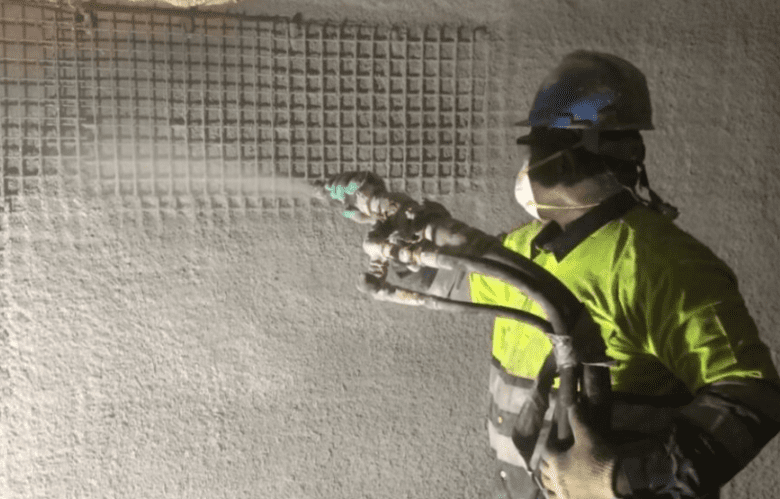
The Shotcrete technology has been consolidated as the most effective method for the installation of refractory concrete in high-temperature industrial environments. Why? Because its ability to project the material through the wet-mix process in a mechanized, fast, and precise way makes it a refractory solution of reference in cyclones, combustion chambers, and other key equipment in the cement industry, among other sectors.
What does shotcreting offer compared to other installation methods?
Shotcrete allows coatings to be applied uniformly and continuously, reducing construction times and improving safety.
Main advantages of shotcreting
- Continuous application without interruptions.
- Better adhesion and compaction of the material.
- Reduction of dust and waste in the work environment.
- Uniform thicknesses with technical control during projection.
Situations where shotcreting is the best option
Shotcreting is especially suited to industrial contexts with limited downtime and complex geometries.
Common use cases
- Repairs on a wide range of equipment across different industries (cement, steel, non-ferrous metals, energy, among others).
- Emergency applications during unplanned maintenance.
- Areas with difficult access where other systems require formwork.
Key factors for successful shotcreting
To achieve the expected results, shotcreting requires proper technical preparation and strict control.
Determinant elements
- Selection of refractory concretes specifically designed for shotcrete.
- Cleaning and conditioning of the substrate.
- Use of pumping equipment and nozzles adapted to the material.
- Constant thickness measurement during application.
- Controlled curing and drying to avoid cracks and ensure durability.
Shotcreting as a standard in the cement industry
Today, shotcreting has become a key technology in refractory maintenance projects across different industries. Its ability to shorten downtimes, increase operator safety, and improve efficiency positions it as the most reliable method for refractory linings.
Conclusion
Shotcreting has become the most efficient and safe technique for installing refractory concretes in demanding industrial environments. Its combination of speed, precision, and sustainability makes it a strategic tool to guarantee operational continuity and quality in refractory linings.



